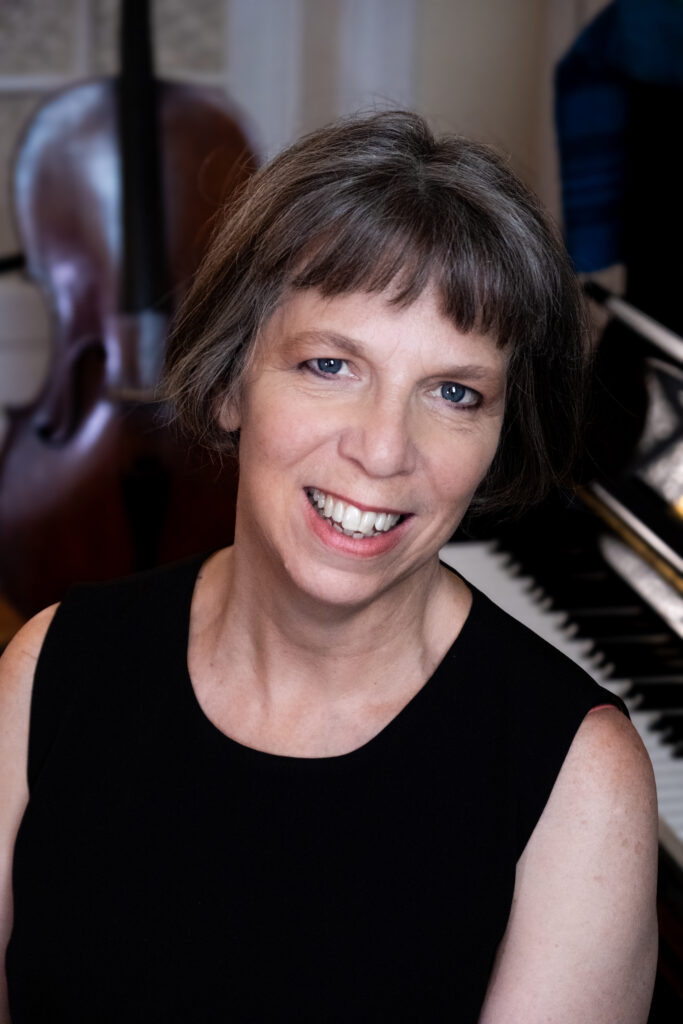Marrying medieval authenticity with new music: our approach to singing Hildegard von Bingen’s music remains entirely faithful to the original 12th century notation of her liturgical chants while bringing new music to encircle and enrobe her music and poetry. In our interpretations, Hildegard remains centre-stage, supported by 21st century musical invention.
Here is a short video souvenir of our first concert – what a memorable evening! A big thank you to all those who came, to our very talented team of musicians, to the organizers, and to © Ridha Ben Hmouda (www.cameraobscura.site) for the photographs and Baudouin van Rijckevorsel for the recording.
About Ensemble Caldemia
Formed in October 2024, Ensemble Caldemia specialises in the performance of medieval music, and contemporary music inspired by it. Concerts are given in carefully selected locations that are made to resonate in a striking and unusual way, allowing the audience to rediscover their concert environment as the programme unfolds.
“Caldemia” is a word from Hildegard von Bingen’s lingua ignota – the language she invented. It appears in the one and only known usage of this language – in the chant O orzchis ecclesia. It means “aroma” or “scent”.
Ensemble Caldemia is under the artistic direction of Penelope Turner and is made up of a core of five professional female singers, each with a passion and curiosity for medieval music, and above all the music of Hildegard von Bingen. Our aim is to find unity in diversity, and each programme is designed to showcase both the solo and ensemble talents of the musicians: a strong, unified group sound is balanced by the individual solo strengths of the singers.:
- Élisabeth Goethals
- Anna Nuytten
- Laurence Renson
- Caroline Sordia
- Penelope Turner
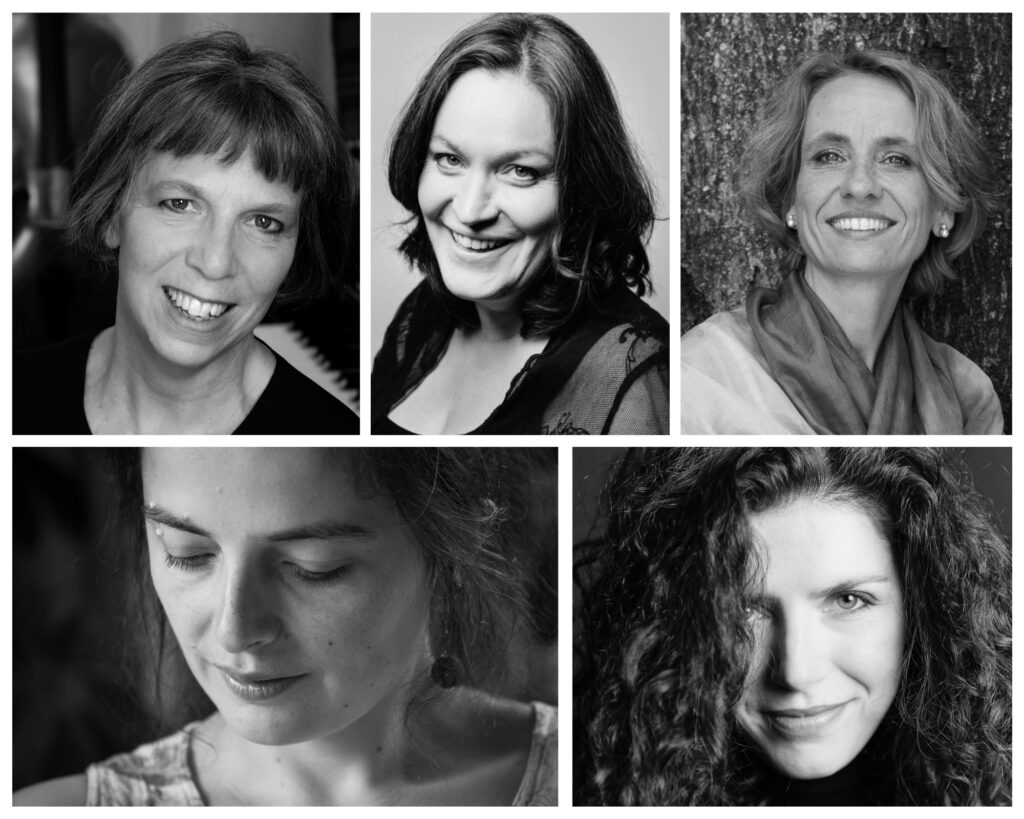
Approach: Medieval music for the 21st century
Ensemble Caldemia demonstrates the continued importance of medieval music today, bringing past and present together in a juxtaposition of medieval music and contemporary works (both musical and from other artistic disciplines).
In keeping with Caldemia‘s key objective, all the singers in Ensemble Caldemia learn and perform Hildegard’s music directly from the original 12th century notation.
We enjoy exploring the spatial and acoustic possibilities of each carefully chosen individual concert venue – singing not only “on stage” but also in procession, behind and among the audience, or even out of sight – to maximise the vibratory power of the music and allow the audience to rediscover their concert venue in a surprising and unusual way.
We increase the accessibility of Hildegard’s music without compromising its authenticity. Her monodies are sung not only in their original form, but also enriched by bourdons and/or given a modern, 21st century polyphonic setting by Penelope Turner (see Hildegard Revisited). For the performance of these contemporary works, we are accompanied by the cellists Christoph Bunzendahl and Harmen Goossens.
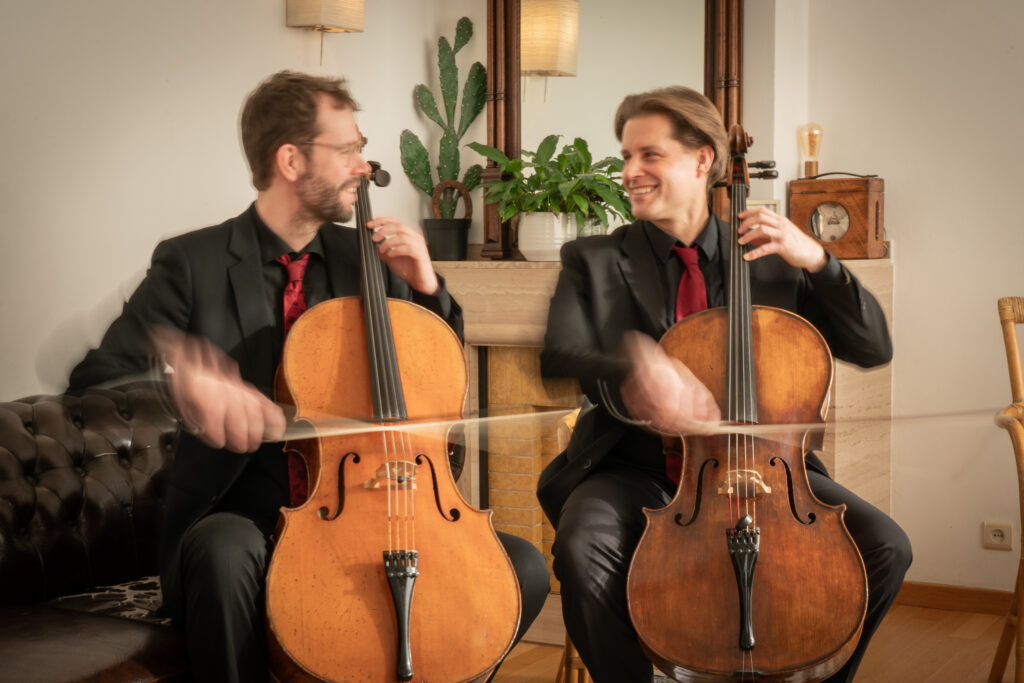
Past Concerts
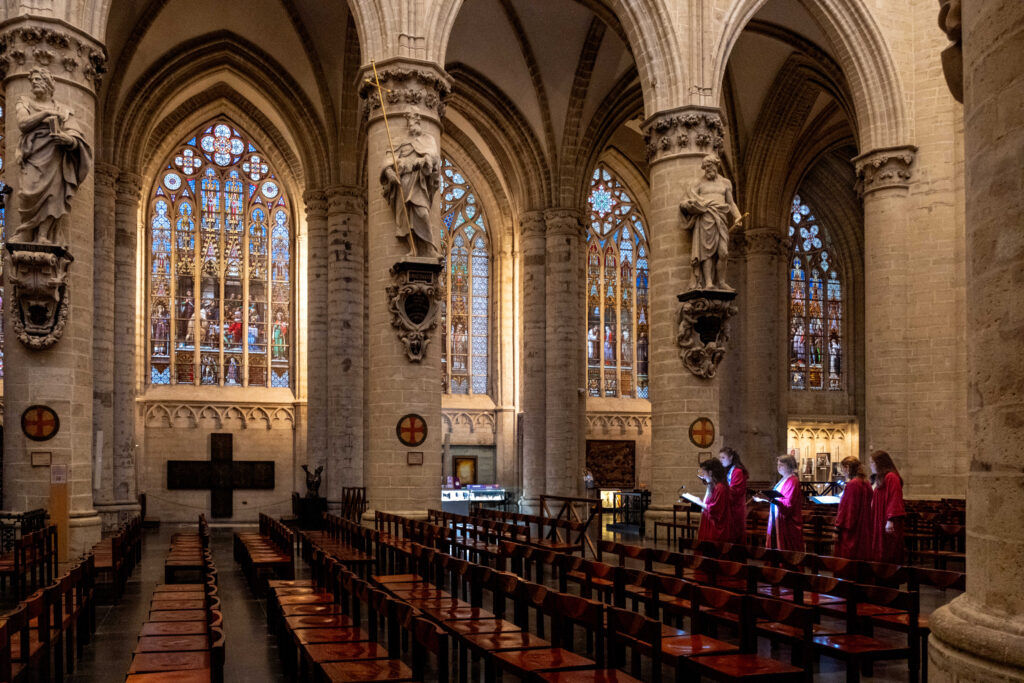
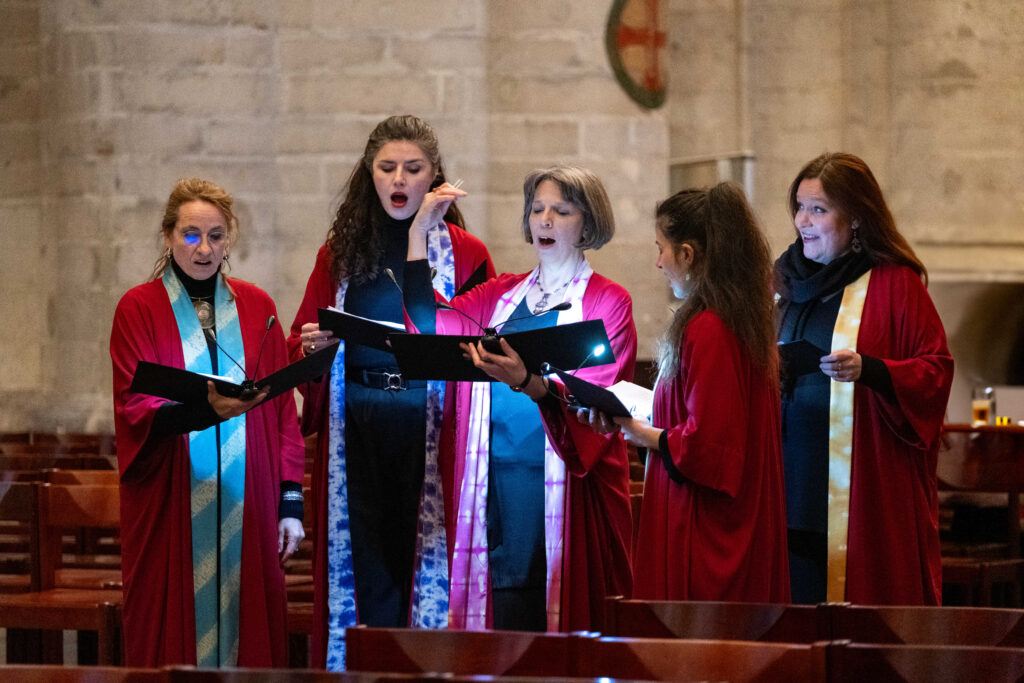
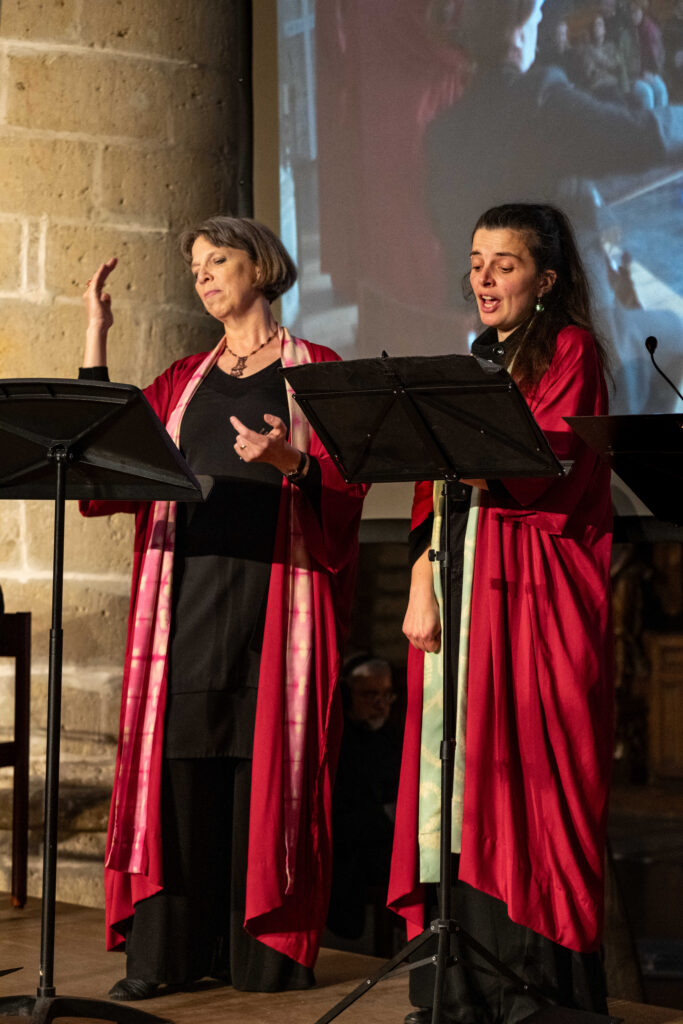
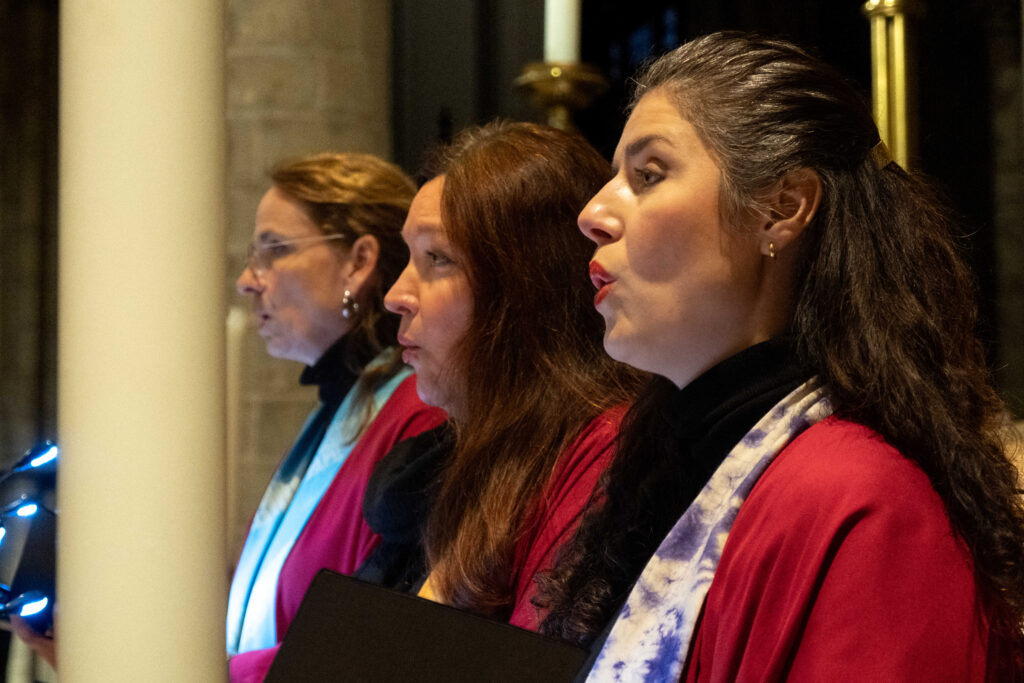
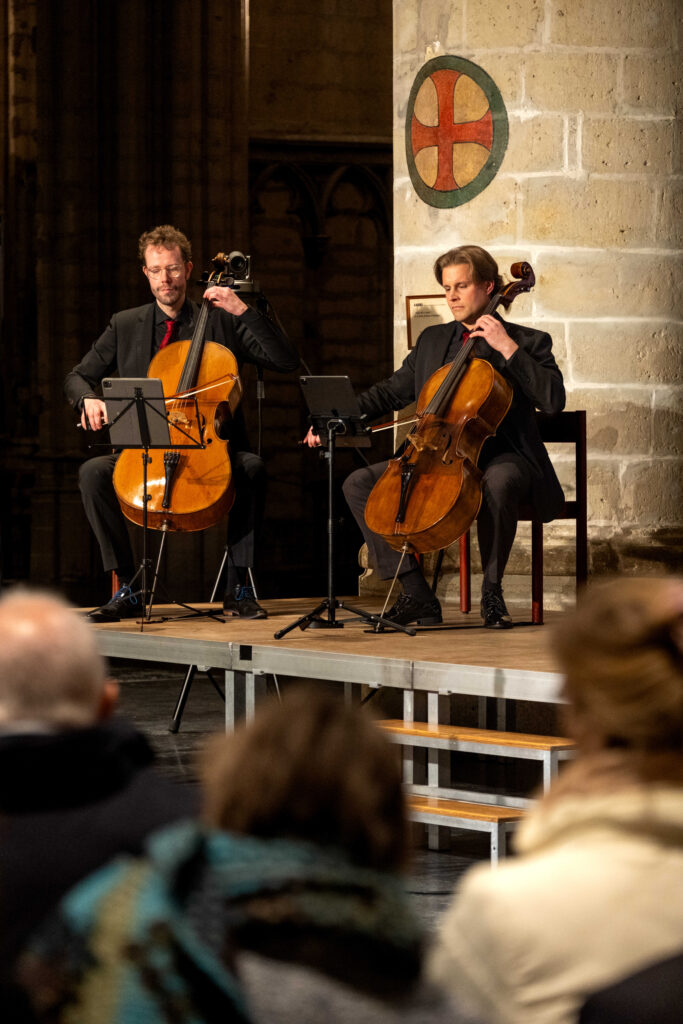
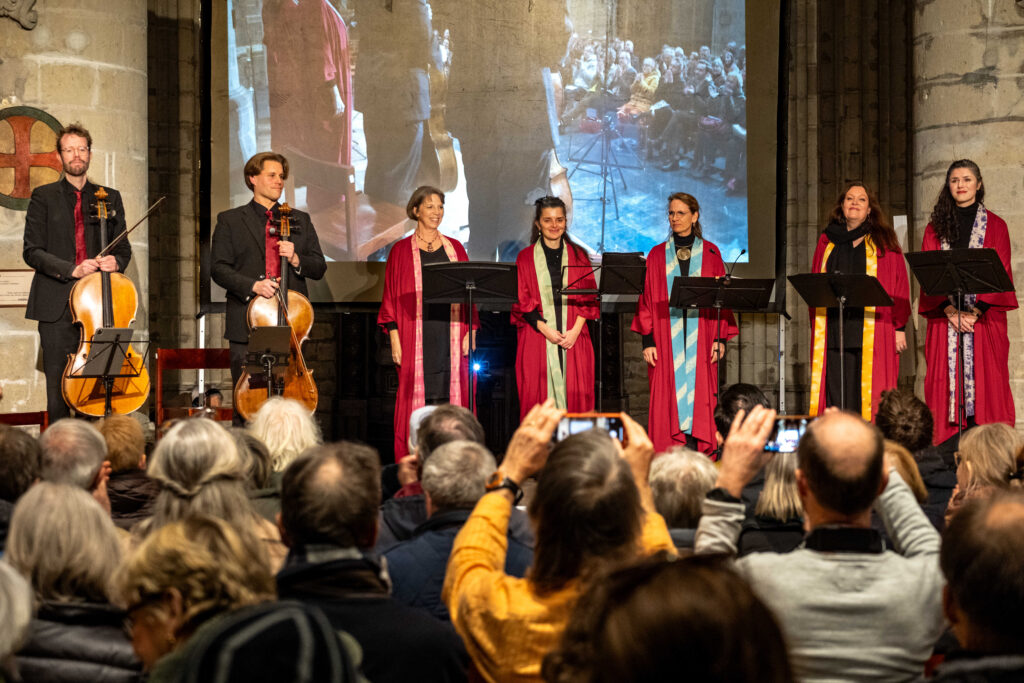
Here is a first trace of our sound and approach – from our rehearsal on December 12, 2024:

